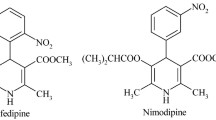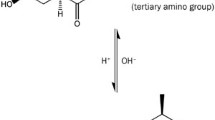Abstract
Purpose. The extent of intestinal absorption of MDR1 P-glycoprotein (P-gp) substrate drugs may be affected by interindividual differences in the expression level of P-gp, and/or by simultaneously administered P-gp substrates/inhibitors. The purpose of the present study is to examine whether the extent to which the intestinal absorption is affected by P-gp can be predicted from in vitro experiments.
Methods. The in situ intestinal perfusion experiments were performed for 12 compounds in mdr1a/1b (–/–) and normal mice to determine the permeability-surface area (PS) product. Thus determined intestinal P-gp function was compared with the in vitro P-gp function, which was determined by comparing the transcellular transport across human P-gp expressing and parental LLC-PK1 monolayers.
Results. In situ experimental results revealed that the extent to which the intestinal absorption is affected by P-gp was in the following order; quinidine > ritonavir > loperamide, verapamil, daunomycin > digoxin, cyclosporin A > dexamethasone, and vinblastine. A significant correlation was observed between P-gp function determined in the intestinal perfusion and that in LLC-PK1 monolayers.
Conclusion. The in vitro transcellular transport across P-gp expressing monolayers may be used to predict the extent to which the intestinal absorption is affected by P-gp.
Similar content being viewed by others
REFERENCES
C. J. Chen, J. E. Chin, K. Ueda, D. P. Clark, I. Pastan, M. M. Gottesman, and I. B. Roninson. Internal duplication and homology with bacterial transport proteins in the mdr1 (P-glycoprotein) gene from multidrug-resistant human cells. Cell 47:381-389 (1986).
K. Ueda, D. P. Clark, C. J. Chen, I. B. Roninson, M. M. Gottesman, and I. Pastan. The human multidrug resistance (mdr1) gene. cDNA cloning and transcription. J. Biol. Chem. 262:505-508 (1987).
S. V. Ambudkar, S. Dey, C. A. Hrycyna, M. Ramachandra, I. Pastan, and M. M. Gottesman. Biochemical, cellular, and pharmacological aspects of the multidrug transporter. Annu. Rev. Pharmacol. Toxicol. 39:361-398 (1999).
V. J. Wacher, J. A. Silverman, Y. Zhang, and L. Z. Benet. Role of P-glycoprotein and cytochrome P450 3A in limiting oral absorption of peptides and peptidomimetics. J. Pharm. Sci. 87:1322-1330 (1998).
L. Z. Benet, T. Izumi, Y. Zhang, J. A. Silverman, and V. J. Wacher. Intestinal MDR transport proteins and P450 enzymes as barriers to oral drug delivery. J. Control. Release 62:25-31 (1999).
A. H. Schinkel. Pharmacological insights from P-glycoprotein knockout mice. Clin. Pharmacol. Ther. 36:9-13 (1998).
A. Sparreboom, J. van Asperen, U, Mayer, A. H. Schinkel, J. W. Smit, D. K. F. Meijer, P. Borst, W. J. Nooijen, J. H. Beijnen, and O. van Tellingen. Limited oral bioavailability and active epithelial excretion of paclitaxel (Taxol) caused by P-glycoprotein in the intestine. Proc. Natl. Acad. Sci. USA 94:2031-2035 (1997).
H. A. Bardelmeijer, J. H. Beijnen, K. R. Brouwer, H. Rosing, W. J. Nooijen, J. H. M Schellens, and O. van Tellingen. Increased oral bioavailability of paclitaxel by GF120918 in mice through selective modulation of P-glycoprotein. Clin. Cancer Res. 6:4416-4421 (2000).
U. Mayer, E. Wagenaar, J. H. Beijnen, J. W. Smit, D. K. F. Meijer, J. van Asperen, P. Borst, and A. H. Schinkel. Substantial excretion of digoxin via the intestinal mucosa and prevention of long term of digoxin accumulation in the brain by the mdr1a P-glycoprotein. Br. J. Pharmacol. 129:1038-1044 (1996).
K. Yokogawa, M. Takahashi, I. Tamai, H. konishi, M. Nomura, S. Moritani, K. Miyamoto, and A. Tsuji. P-glycoprotein-dependent disposition kinetics of tacrolimus: studies in mdr1a knockout mice. Pharm. Res. 16:1213-1218 (1999).
R. B. Kim, M. F. Fromm, C. Wandel, B. Leake, A. J. J. Wood, D. M. Roden, and G. R. Wilkinson. The drug transporter P-glycoprotein limits oral absorption and brain entry of HIV-1 protease inhibitors. J. Clin. Invest. 101:289-294 (1998).
C. B. Washington, H. R. Wiltshire, M. Man, T. Moy, S. R. Harris, E. Worth, P. Weigl, Z. Liang, D. Hall, L. Marriott, and T. F. Blaschke. The disposition of saquinavir in normal and p-glycoprotein deficient mice, rats, and in cultured cells. Drug Metab. Dispos. 28:1058-1062 (2000).
B. Greiner, M. Eichelbaum, P. Fritz, H. P. Kreichgauer, O. von Richter, J. Zundler, and H. K. Kroemer. The role of intestinal P-glycoprotein in the interaction and rifampin. J. Clin. Invest. 104:147-153 (1999).
K. S. Lown, R. R. Mayo, A. B. Leichtman, H. L. Hsiao, K. Turgeon, P. Schmiedlin-Ren, M. B. Brown, W. Guo, S. J. Rossi, L. Z. Benet, and P. B. Watkins. Role of intestinal P-glycoprotein (mdr1) in interpatient variation in the oral bioavailability of cyclosporine. Clin. Pharmacol. Ther. 62:248-260 (1997).
D. J. Edwards, M. E. Fitzsimmons, E. G. Schuetz, K. Yasuda, M. P. Ducharme, L. H. Warbasse, P. M. Moster, J. D. Schuetz, and P. Watkins. 6′,7′-Dihydroxybergamottin in grapefruit juice and Seville orange juice: Effect on cyclosporin disposition, enterocyte CYP3A4, and P-glycoprotein. Clin. Pharmacol. Ther. 65:237-244 (1999).
N. von Ahsen, M. Richter, C. Grupp, B. Ringe, M. Oellerich, and V. W. Armstrong. No influence of the MDR-1 C3435T polymorphism or a CYP3A4 promoter polymorphism (CYP3A4-V Allele) on dose-adjusted cyclosporin A trough concentration or rejection incidence in stable renal transplant recipients. Clin. Chem. 47:1048-1052 (2001).
S. Hoffmeyer, O. Burk, O. von Richter, H. P. Arnold, J. BrockmÖller, A. Johne, I. Cascorbi, T. Gerloff, I. Roots, M. Eichelbaum, and U. Brinkmann. Functional polymorphisms of the human multidrug-resistance gene: Multiple sequence variations and correlation of one allele with P-glycoprotein expression and activity in vivo. Proc. Natl. Acad. Sci. USA 97:3473-3478 (2000).
R. B. Kim, B. F. Leake, E. F. Choo, G. K. Dresser, S. V. Kubba, U. I. Schwarz, A. Taylor, H. G. Xie, J. McKinsey, S. Zhou, L. B. Lan, J. D. Schuetz, E. G. Schuetz, and G. R. Wilkinson. Identification of functional variantMDR1 alleles among European Americans and African Americans Clin. Pharmacol. Ther. 70:189-199 (2001).
J. Fellay, C. Marzolini, E. R. Meaden, D. J. Back, T. Buclin, J. Chave, L. A. Decosterd, H. Furrer, M. Opravil, G. Pantaleo, D. Retelska, L. Ruiz, A. H. Schinkel, P. Vernazza, C. B. Eap, and A. Telenti. Response to antiretroviral treatment in HIV-1-infected individuals with the allelic variants of the multidrug resistance transporter 1: a pharmacogenetics study. Lancet 359:30-36 (2002).
Y. Adachi, H. Suzuki, and Y. Sugiyama. Comparative studies on in vitro methods for evaluating in vivo function of MDR1 P-glycoprotein. Pharm. Res. 18:1660-1668 (2001).
M. Yamazaki, W. E. Neway, T. Ohe, I. Chen, J. F. Rowe, J. H. Hochman, M. Chiba, and J. H. Lin. In vitro substrate identification studies for P-glycoprotein-mediated transport: species difference and predictability of in vivo results. J. Pharmacol. Exp. Ther. 296:723-735 (2001).
R. M. Loria, H. L. Kayne, S. Kibrick, and S. A. Broitman. Measurement of intestinal absorption in mice by a double-label radioisotope perfusion technic. Lab. Animal Sci. 26:603-606 (1976).
H. Yuasa and K. Matsuda, and J. Watanabe. Influence of anesthetic #x00AEimens on intestinal absorption in rats. Pharm. Res. 10:884-888 (1993).
L. Barthe, J. Woodley, and G. Houin. Gastrointestinal absorption of drugs: methods and studies. Fundam. Clin. Pharmacol. 13:154-168 (1999).
A. H. Schinkel, C. A. A. M. Mol, E. Wagenaar, L. van Deemter, J. J. M. Smit, and P. Borst. Multidrug resistance and the role of P-glycoprotein knockout mice. Eur. J. Cancer 31A:1295-1298 (1995).
P. Borst, A. H. Schinkel, J. J. M. Smit, E. Wagenaar, L. van Deemter, A. J. Smith, E. W. H. M. Eijdems, F. Baas, and G. J. R. Zaman. Classical and novel forms of multidrug resistance and the physiological function of P-glycoproteins in mammals. Pharmacol. Ther. 60:289-299 (1994).
Y. Zhang and L. Z. Benet. The gut as a barrier to drug absorption. Clin. Pharmacokinet. 40:159-168 (2001).
E. G. Schuetz, D. R. Unbenhauer, K. Yasuda, C. Brimer, L. Nguyen, M. V. Relling, J. D. Schuetz, and A. H. Schinkel. Altered expression of hepatic cytochromes P-450 in mice deficient in one or more mdr1 genes. Mol. Pharmacol. 57:188-197 (2000).
Author information
Authors and Affiliations
Corresponding author
Rights and permissions
About this article
Cite this article
Adachi, Y., Suzuki, H. & Sugiyama, Y. Quantitative Evaluation of the Function of Small Intestinal P-Glycoprotein: Comparative Studies Between in Situ and in Vitro . Pharm Res 20, 1163–1169 (2003). https://doi.org/10.1023/A:1025088628787
Issue Date:
DOI: https://doi.org/10.1023/A:1025088628787




